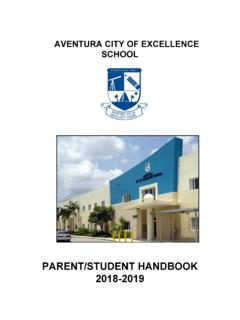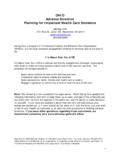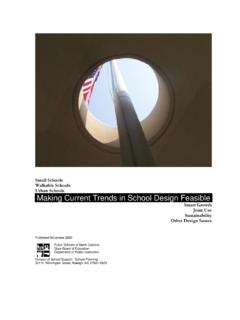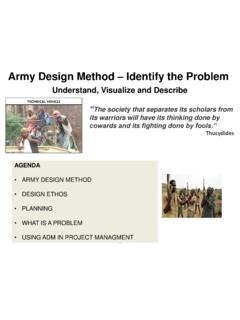Transcription of DEPARTMENT OF THE AIR FORCE HEADQUARTERS …
1 BY ORDER OF THE SECRETARY OF THE AIR FORCE AIR FORCE INSTRUCTION 90-802 11 FEBRUARY 2013 Certified Current on 15 May 2017 Special Management RISK MANAGEMENT COMPLIANCE WITH THIS PUBLICATION IS MANDATORY ACCESSIBILITY: Publications and forms are available on the e-Publishing website at for downloading or ordering. RELEASABILITY: There are no releasability restrictions on this publication. OPR: AFSEC/SEA Supersedes: AFI90-901, 1 April 2000 Certified by: AF/SE (Major General Gregory A. Feest) Pages: 31 This Air FORCE Instruction (AFI) implements the Risk Management (RM) guidance within Air FORCE Policy Directive (AFPD) 90-8, Environment, Safety, and Occupational Health Management and Risk Management. This AFI provides an overarching framework for Air FORCE RM (AF RM) and establishes the requirement to integrate and sustain RM throughout the AF as a risk reduction process to assist leaders in identifying and controlling safety and health hazards in making informed decisions.
2 It assigns responsibilities for AF RM Process elements and contains AF RM Process management information for the Safety and Occupational Health program. Via formal memorandum dated 12 May 2010, the Assistant Secretary of the Air FORCE , Installations, Environment and Logistics (SAF/IE), delegated authority to the AF Chief of Safety (AF/SE) for DODI , DoD Safety and Occupational Health Program, Enclosure guidance as related to the AF RM Process. HQ AF (HAF) staffs, Major Commands (MAJCOMs), Direct Reporting Units (DRUs), Field Operating Agencies (FOAs), Numbered AFs (NAFs) and Component Numbered AFs (CNAFs) are responsible for establishing and sustaining AF RM according to the process elements described in this AFI. This publication applies to all Air FORCE units, agencies and personnel (military and civilian), to include Air FORCE Reserve Command (AFRC), and Air National Guard (ANG).
3 Although interrelated, this publication does not address AF RM guidelines, policies, and procedures specifically tied to Acquisition and Sustainment Life Cycle Management, Anti-terrorism, Integrated Defense RM Process (IDRMP), Installation Emergency Management (EM) RM. AF RM concerns related to Integrated Life Cycle Management (ILCM) guidelines, policies, and procedures for the development, review, approval, or management of systems, subsystems, end-items and services are addressed in AFI 63-101, Acquisition and Sustainment Life Cycle Management, and related publications. All AF RM issues related to acquisition and test efforts are addressed in AFI 63-101 and will be coordinated with the Assistant Secretary of the Air 2 AFI90-802 11 FEBRUARY 2013 FORCE for Acquisition (SAF/AQ). AF RM concerns related to Anti-terrorism reside in AFI 10-245 (AF/A7S).
4 IDRMP is addressed in AFI 31-101 (AF/A7S), Integrated Defense. AF RM concerns related to the Installation Emergency Management Program reside in AFI 10-2501 (AF/A7C). Additionally, this AFI does not address the risk assessment applied to the Annual Planning and Programming Guidance, the Air FORCE Requirements Oversight Council, and similar strategic-level applications developed by AF/A9, with the process stakeholders, which link to the Chairman of the Joint Chief of Staff (CJCS) Integrated Risk Matrix and the Air FORCE s related Risk Criteria. Per DEPARTMENT of Defense Instruction (DoDI) , this AFI excludes explosive safety covered under DEPARTMENT of Defense (DoD) , DoD Ammunition and Explosive Safety Standards, fire prevention and protection covered under DoD Instruction , DoD Fire and Emergency Services (F&ES) Program, and AFI 32-2001, Fire Emergency Services Program.
5 Specific questions on any of the above topic areas should be directed to the appropriate subject matter experts and agencies as appropriate. This AFI may be supplemented at any level, but all supplements must be routed to AF/SE, for coordination prior to certification and approval. Refer recommended changes and questions about this publication to the Office of Primary Responsibility (OPR) (DSN: 246-1562/0675) using the AF Form 847, Recommendation for Change of Publication; route AF Form 847s from the field through Major Command (MAJCOM) publications/forms managers. Ensure that all records created as a result of processes prescribed in this publication are maintained in accordance with Air FORCE Manual (AFMAN) 33-363, Management of Records, and disposed of in accordance with Air FORCE Records Information Management System (AFRIMS) Records Disposition Schedule (RDS) located at SUMMARY OF CHANGES This document has been substantially revised and must be completely reviewed.
6 All references to the term Operational RM (ORM) have been removed and replaced with the term Risk Management (RM) to emphasize the importance of hazard and risk mitigation and management in all aspects of the AF, not just Operations. In addition, all references to the term Program have been replaced with the term Process to support the premise that RM is a systemic process and tool to enhance risk mitigation practices in order to prevent the accidental loss of personnel, facilities, weapon systems, and equipment during peacetime and wartime, rather than simply a program to be managed. Several revisions were made to standardize the AF RM Process with sister service RM processes, terms and applications. Primary changes include: 1) The 6-Step AF RM Process was modified to a 5-Step RM Process; 2) The RM principles were modified; 3) The levels of RM were reduced to Deliberate and Real-Time ; 4) Paragraph 9 and subsections were added on Real-Time RM (RTRM) and "ABCD" mnemonic.
7 Section B outlines specific waiver procedures and better defines all agency responsibilities for the AF RM Process. Section C outlines the AF RM Core Concepts and Processes. Section D better defines RM training requirements. Section A AF RM Overview 3 1. RM Definition and Tenets: .. 3 AFI90-802 11 FEBRUARY 2013 3 2. RM Goals: .. 4 3. RM Foundations: .. 4 Section B AF RM Process Management 5 4. Responsibilities: .. 5 5. Waivers to this AFI: .. 11 Section C AF RM Core Concepts and Processes 12 6. RM Principles: .. 12 7. RM Levels: .. 13 Figure 1. Relationship of RM Levels.. 13 8. 5-Step RM Process: .. 14 Figure 2. 5-Step RM Process.. 15 Figure 3. Sample Risk Assessment Matrix.. 16 9. Real-Time RM (RTRM) Process or ABCD Model: .. 19 Figure 4. The 5-Step RM Process as related to the RTRM / ABCD Model.. 20 Section D AF RM Training 22 10.
8 Training Resources: .. 22 11. Training Requirements: .. 23 12. Training Documentation: .. 25 Attachment 1 GLOSSARY OF REFERENCES AND SUPPORTING INFORMATION 26 Attachment 2 WAIVER REQUEST FORMAT 31 Section A AF RM Overview 1. RM Definition and Tenets: RM Definition. RM is a decision- making process to systematically evaluate possible courses of action, identify risks and benefits, and determine the best course of action (COA) for any given situation. RM enables commanders, functional managers, supervisors, and individuals to maximize capabilities while limiting risks through application of a simple, systematic process appropriate for all personnel and functions in both on- and off-duty situations. Appropriate use of RM increases an organization s and individual s ability to safely and effectively accomplish their mission/activity while preserving lives and precious resources.
9 RM Tenets: Risk is inherent in all missions, operations and activities, both on- and off-duty. Risk can be effectively mitigated if understood and appropriate action is taken. 4 AFI90-802 11 FEBRUARY 2013 All personnel are responsible for utilizing RM concepts, tools and techniques. The RM process outlined herein applies to risk-related decisions when such decisions are not governed via separately established requirements/guidelines ( , statutes, regulations, or DoD/AF policy/guidance that address personnel health and safety or environmental matters and dictate particular decisions or outcomes within these requirements/guidelines). 2. RM Goals: Enhance mission effectiveness at all levels, while preserving assets and safeguarding health and welfare. Create an Air FORCE cultural mindset in which every leader, Airman, and employee is trained and motivated to manage risk in all their on- and off-duty activities.
10 Integrate RM into mission and activity planning processes, ensuring decisions are based upon risk assessments of the operation/activity. Identify opportunities to increase AF warfighting effectiveness in all environments, and ensure success at minimal cost of resources. The RM Process shall be institutionalized and be an inherent part of all military operations to address safety, occupational and environmental health risks. 3. RM Foundations: Essential concepts of AF RM: RM is a comprehensive system for improving individual and organizational performance in all functional areas, operations and activities, both on- and off-duty. RM must be tailored to meet the unique mission needs and operational requirements of each organization and personnel within the organization. RM provides the process and tools to develop and enhance awareness and understanding of at-risk activities and behavior of personnel both on- and off-duty.

















